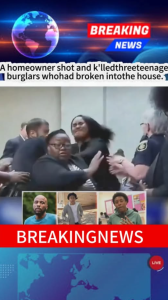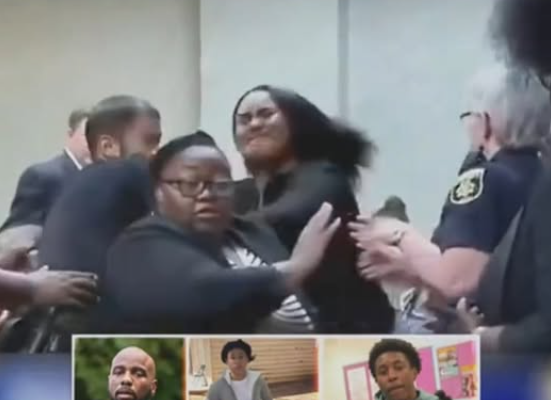Homeowner Fatally Shoots Three Teen Burglars During Break-In
In the early hours of September 16, 2019, a quiet neighborhood in Conyers, Georgia, was shattered by the sound of gunfire. Three teenagers—Isaiah Reid and Jaime Hernandez, both 16, and a 15-year-old whose name was not released—were fatally shot by a homeowner during what authorities described as an attempted robbery. The incident, ruled a case of self-defense under Georgia’s stand-your-ground law, has since sparked legal battles, community debate, and national reflection on the intersection of crime, youth, and self-defense laws.
The Incident
According to the Rockdale County Sheriff’s Office, the three teens approached a residence on White Oak Court around 4 a.m., masked and armed. They encountered three individuals in the front yard. One of the teens reportedly fired a shot, prompting the homeowner to return fire. All three teens were struck. One died at the scene, while the other two succumbed to their injuries at a nearby hospital.
Sheriff Eric Levett stated that the homeowner was questioned but not charged, citing preliminary evidence that supported a stand-your-ground defense. Georgia law permits the use of deadly force to prevent death, bodily harm, or a forcible felony. Deputies confirmed that the teens were armed and fired first, reinforcing the homeowner’s legal justification.
Community Reaction
The shooting sent shockwaves through the Pine Forest neighborhood. Residents described the area as peaceful and were stunned by the violence. Neighbor Brian Jenkins, who heard the gunfire, recounted the chaos: “I heard somebody yell for help… then I heard it again, and that’s when I came outside. There was one gentleman laid out and our neighbor Mr. Jenkins was helping him out”.
While some neighbors expressed sympathy for the homeowner, others grappled with the tragedy of young lives lost. “They were still three young men; they still had a mother, a father, a sister,” Jenkins said. The incident raised uncomfortable questions about youth crime, parental responsibility, and the limits of self-defense.
Legal Aftermath
Though the shooting was ruled self-defense, the story did not end there. In May 2025, the parents of the deceased teens filed a lawsuit against the homeowner, seeking damages and accountability. The lawsuit reignited public debate over Georgia’s stand-your-ground law and whether justice had truly been served.
Critics of the lawsuit argue that the teens initiated a violent felony and that the homeowner acted within his rights. Sheriff Levett defended the homeowner’s actions, stating, “The law is clear: you don’t get to attack someone and then cry foul when they fight back.” Supporters of the lawsuit, however, contend that the homeowner used excessive force and that the teens’ age and circumstances should be considered.
Broader Implications
This case is emblematic of a larger national conversation about self-defense laws, youth crime, and gun violence. Stand-your-ground laws, which exist in more than half of U.S. states, allow individuals to use deadly force without retreating if they believe they are in imminent danger. While proponents argue these laws empower victims and deter crime, critics warn they can escalate violence and disproportionately affect marginalized communities.
The Conyers shooting also highlights the tragic consequences of youth involvement in crime. Why were three teenagers out at 4 a.m., masked and armed? What led them down this path? These questions remain unanswered but underscore the importance of community engagement, education, and early intervention.
The Role of Media and Public Perception
Media coverage of the incident varied, with some outlets focusing on the legal aspects and others emphasizing the emotional toll. Fox News framed the event as a clear-cut case of self-defense, while local outlets like ABC10 and News4JAX provided more nuanced accounts, including interviews with neighbors and family members.
Public perception was equally divided. Online forums and social media saw heated debates, with some users praising the homeowner’s quick response and others mourning the loss of young lives. The case became a flashpoint for discussions about race, gun rights, and the criminal justice system—even though authorities confirmed that both the homeowner and the teens were Black, and race was not a factor in the shooting.
A Tragic Reminder
Ultimately, the Conyers shooting is a tragic reminder of the fragility of life and the complexity of justice. It forces us to confront uncomfortable truths: that teenagers can and do commit violent crimes, that homeowners have the right to defend themselves, and that the legal system must balance protection with accountability.
It also calls for deeper societal introspection. How do we prevent youth from engaging in criminal behavior? How do we support families in crisis? How do we ensure that self-defense laws are applied fairly and justly?
Conclusion
The fatal shooting of three teen burglars during a break-in in Georgia is not just a story of crime and punishment—it’s a story of fear, loss, and the difficult choices people make in moments of crisis. As the legal proceedings unfold and the community continues to heal, one thing is clear: this incident will remain a powerful case study in the ongoing debate over self-defense, youth violence, and the role of law in protecting lives.

